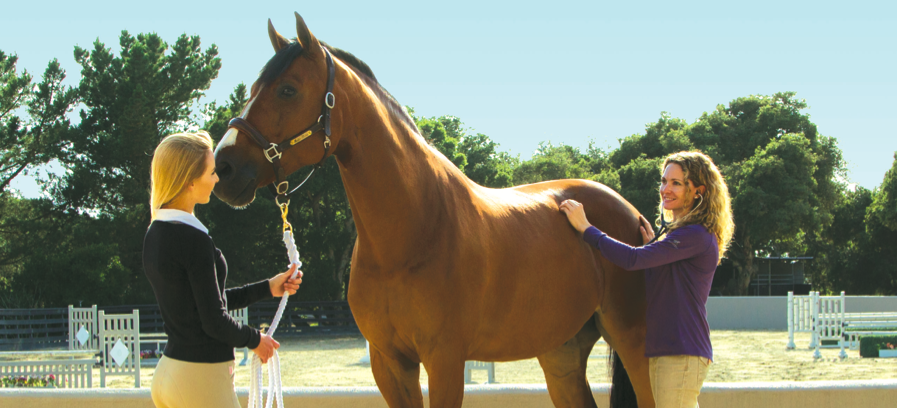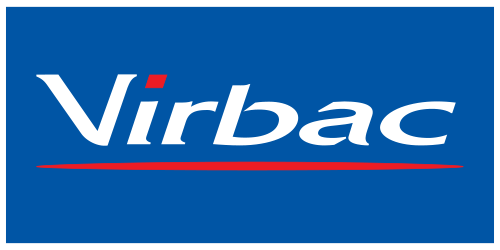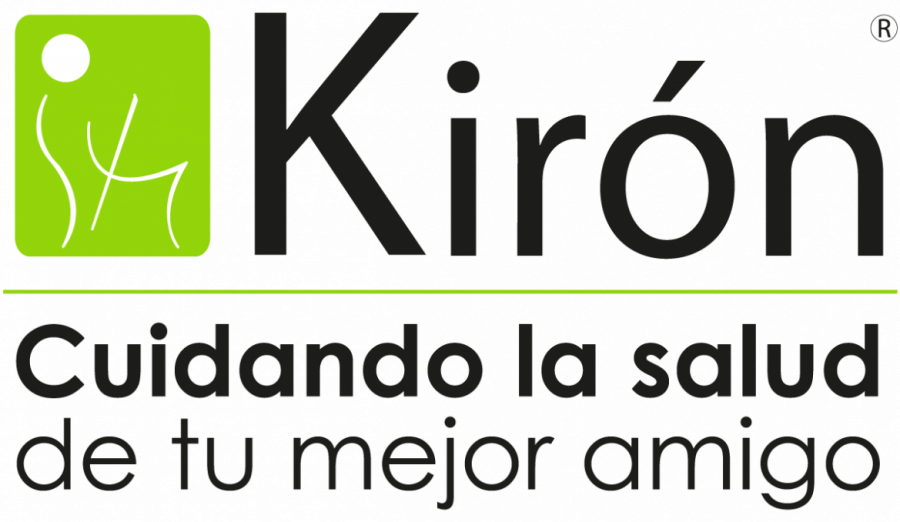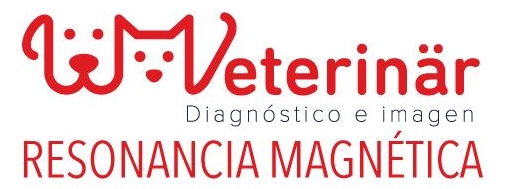Chequeo de intestinos

The microbiome may sound like a futuristic concept, but in reality, it is very much amongst the most promising frontiers in veterinary and human medicine. More importantly, it’s happening now. What exactly is the microbiome? It’s surprisingly simple and utterly com- plex all at the same time. To start, each region of the body — wheth- er that be equine or human — has its own microbiome, however, the gastrointestinal microbiome is where veterinarians, medical doc- tors and researchers are placing their bets. One such researcher is Dr. Diana Hassel of Colorado State University’s Veterinary Teach- ing Hospital. A surgeon and high-level triathlete in her own right,
Dr. Hassel is breaking new ground in her work surrounding the mi- crobiome and its effect on not only equine health but human health as well. She explains, “the GI microbiome is the combination of all of the microbes that reside in one’s gastrointestinal tract. Those consist of bacteria, fungi (yeast), protozoa, viruses and archaea. Our microbes outnumber the cells in our body by a factor of about 10 to 1. Even more impressive is that mammalian cells express about 20,000 genes, but there are 2-20 million genes expressed in the microbial population of the gut.”
What We Know
Research into the microbiome, its structure and potential impact on both equine and human health is moving rapidly while currently in its infancy. There’s so much to know in this potential game- changing arena, and big plans are being made for the studies that will bring key answers to questions that could reshape the face of medicine. “We are in the early stages of understanding the role of the microbiota in health and disease,” says Dr. Noah Cohen, Associ- ate Department Head for Research and Graduate Studies and Pro- fessor of Large Animal Internal Medicine at Texas A&M’s College of Veterinary Medicine. “In a sense, we don’t know much, and on the other hand, we know a lot,” he says. “What we know is that the microbiota can influence metabolism, exclude pathogenic bacteria that cause disease, alter behavior, impact development of immune responses and more.” Dr. Cohen’s colleague at Texas A&M, Assis- tant Professor of Large Animal Surgery, Dr. Canaan Whitfield, adds, “what we know is that the microbiome has a profound impact on the host,” referring to the health of the horse. “The findings on the human side have linked microbiome alterations with a huge number of seemingly unrelated diseases like autism, diabetes, heart disease, obesity and many gastrointestinal diseases like inflammatory bowel disease. While the equine research lags behind the human field, equine fecal microbiome alterations have been linked to colic, colitis and laminitis. Many groups are quickly working to link microbiome alterations to several other diseases. We know the microbiome is important to horse health, we just don’t know how the microbiome regulates host health nor have we nailed down the exact alterations of the horse’s microbiome that may lead to disease.” There’s a tre- mendous amount of discovery to come, and the veterinary com- munity looks to the microbiome with excitement for its potential in both preventing and treating disease.
“We’re looking at the role of the microbiota in immune regulation in horses, includ- ing the respiratory tract microbiota. Also, we’re interested in how microbiota and microbial metabolites promote health and healing in the GI tract. Lastly, we plan to investigate how the GI microbiota influences metabolism and obesity in horses.”
Dr. Noah Cohen
Associate Department Head for Research and Graduate Studies and Professor of Large Animal Internal Medicine, Texas A&M College of Veterinary Medicine
“I was instantly mesmerized by microbiome research when I learned about the initial studies in human health and the links of the microbiome to multiple disease states. As an avid triathlete, I am very interested in ways I can improve my health, recovery from training and performance through a healthy micro- biome. As a colic surgeon and criticalist, I see the incredible potential to im- prove horse health as well.”
Dr. Diana Hassel
Associate Professor of Equine Emergency Surgery & Critical Care, Colorado State University Veterinary Teaching Hospital
The Metabolome
The exact function and impact of the microbiome may remain a bit of a mystery, but one component that researchers are eyeing closely is the equine metabolome. “The GI metabolome is the complete set of small molecules in the gut that reflects the interaction be- tween an organism’s genome and its environment,” says Dr. Has- sel. “It’s likely that the metabolomic changes — from both bacte- rial population changes and changes in bacterial gene expression — play an important role in altering health.” Dr. Whitfield expounds on the metabolome, adding “a few leading theories are that there are microbiota-derived metabolites — metabolites produced by the microbiota — that interact with the host to mediate a beneficial ef- fect.” Quite simply, loss of these metabolites can lead to disease in the horse. One such instance of cause and effect being inves- tigated is the use of antibiotics, non-steroidal anti-inflammatories and other common medications that are being shown to alter the microbiome and potentially disrupt its balance. While there is an important place for these medications in veterinary medicine, re- searchers hope that with further study, they can recommend better protocols for when to use these drugs and how to counteract their side effects.
The Impact on Immune Health
With a large percentage of the immune system residing in the gut, the health of the microbiome is thought to play a significant role in a horse’s ability to ward off illness and remain well. A healthy, diverse and properly-functioning gut sets the stage for a strong immune system and a healthier animal. “Another mechanism by which the microbiome influences health is by interacting with host immune cells,” says Dr. Whitfield. “The wall of the gastrointestinal tract is rich with immune cells. These cells contain binding sites, called pattern recognition receptors, that recognize various molecules on bacteria in the gut microbiota. When these receptors bind to these molecules, they can induce signal transduction that results in many different outcomes depending on how many and which types of molecules or receptors were engaged. The subsequent actions can be as diverse as improving intestinal barrier function, to inducing immune cells to be more tolerant of bacteria — i.e. less inflamma- tory,” he says. These are two examples amongst many that show how the microbiome can influence the health of the horse and, in particular, the immune system.
Ongoing Research
There are exciting avenues being plotted by human and animal re- searchers alike, with the goal of better understanding the microbi- ome, its effect on health and the potential for manipulating it to both prevent and treat disease. Drs. Hassel, Cohen and Whitfield are heavily vested in the microbiome and hope for significant discover- ies. “My research so far has focused on methods to try to normalize the GI microbiome and metabolome when a horse is exposed to an- timicrobial therapy,” says Dr. Hassel. One such method studied by Dr. Hassel and used to normalize the microbiome is the administra- tion of Platinum Balance®, a daily prebiotic/probiotic. “Preliminar- ily, it looks like Platinum Balance® may have helped normalize the GI metabolome after exposure to antimicrobials.” Further than her current work, Dr. Hassel has plans to explore the GI microbiome and
its effect on colic, one of the most prevalent and deadly of equine diseases. “I personally hope to study mechanisms to alter the mi- crobiome and metabolome toward a more healthy state in chronic recurrent colic cases and colitis,” she says. “Colitis is such a life- threatening disease and many chronic colickers often end up being euthanized, so these are highly impactful conditions.” Aside from addressing colic, Dr. Hassel’s goal is to explore how the microbiome may play a role in two other significant equine conditions: metabolic syndrome and equine asthma (RAO).
For Dr. Cohen, he and his colleagues are focused on three primary areas of interest. “We’re looking at the role of the microbiota in immune regulation in horses, including the respiratory tract mi- crobiota,” he says. “Also, we’re interested in how microbiota and microbial metabolites promote health and healing in the GI tract.” Lastly, he and his team plan to investigate how the GI microbiota influences metabolism and obesity in horses. As a colleague of Dr. Cohen’s, Dr. Whitfield adds to the list. “I’m interested in linking the microbiome to specific equine diseases both causally and mecha- nistically,” he says. “I’m also interested in how we as veterinarians and horse owners alter the equine microbiome unintentionally via our management practices and how these alterations might cause disease.” It’s an important point. The care, feeding and manage- ment of horses has changed drastically over the last century, taking a species that has evolved on grazing and instead keeping horses stalled while being fed one to three meals daily. Dr. Whitfield sums up the research perfectly, “describing differences and linking these changes to disease is all well and good,” he says. “But at the end of the day what is clinically important will be using these findings to develop effective prevention and treatment strategies of the dis- eases that we link to the microbiota, and that is the ultimate goal of my research.”
The Translational Aspect
Perhaps one of the greatest advantages to equine and human re- search alike is that the horse is often an excellent model for the human and vice versa. Several areas of equine medicine are able to emulate human medicine, with the same being true for human doctors looking to capitalize on the often much more rapid progress that equine veterinarians and researchers are able to make. “While there are marked differences between horses and humans,” says Dr. Cohen, “what we learn in horses could help humans.” Dr. Whitfield agrees, “there are clear areas of cross-over in both directions. Ob- viously, research in this area on the human side is outpacing the equine side, but I think we can use those findings and approaches to gain information about horses. The other direction could also be true in that many of the same diseases that affect people affect horses, and by studying horses, we can learn valuable information about human disease.” By studying the microbiome in horses, it al- lows veterinarians to gain significant knowledge from larger sample groups with greater ease. Horses are simply easier to work with than humans, and compliance can be strictly monitored. “Using the horse, we can conduct studies that would be difficult in people; diet change for example,” says Dr. Whitfield. “Many people struggle to comply with strict diet alterations. Horses, on the other hand, will complain far less about a diet change and are unlikely to be able to sneak that extra candy bar or bowl of ice cream making these sorts of studies far easier in horses.”
As for Dr. Hassel, she sees a bright future in human medicine regard- ing the microbiome, just as she does with horses. “I’m familiar with much of the research on humans and the correlation of microbiome population changes with particular disease states, including cancer, obesity, immune-mediated diseases, GI disease and neurologic dis- eases to name a few,” she says. The implications of such theories are indeed exciting and could forever change the face of medicine. Dr. Hassel continues, “also, there is certainly a large amount of evi- dence linking gut health to brain health.” Dr. Whitfield shares Dr. Hassel’s enthusiasm, “this is a fascinating area,” he says. “It seems that every day there is a major paper linking the human microbi- ome to a new disease. What I have found most interesting is that it seems the early, neonatal microbiome is critically important in people.” He’s referring, of course, to findings that suggest that the manner in which infants are born sets the stage for the health of their microbiome. “Study after study have shown that the method of birth — C-section vs. natural — and early use of antibiotics in people has a major impact on diseases later in life that are appar- ently due to differences in the early microbiome,” he says. “Similar findings are true in children where exposure to ‘dirty’ environments and owning pets at a young age appear to protect from any number of autoimmune diseases.”
A Personal Interest
“My passion for the horse led me down the path of veterinary medi- cine from a young age,” says Dr. Hassel. “I am inspired every day by learning something new and will always consider myself a student. The research is just one of the ways that I continue to learn, but the greatest attribute of research is the ability to share the data to make a positive impact worldwide on the health of the horse.” Through- out her career, Dr. Hassel has conducted studies that have helped change the face of veterinary medicine, yet the microbiome may be her most important frontier. “I was instantly mesmerized by micro- biome research when I learned about the initial studies in human health and the links of the microbiome to multiple disease states.
As an avid triathlete, I am very interested in ways I can improve my health, recovery from training and performance through a healthy microbiome. As a colic surgeon and criticalist, I see the incredible potential to improve horse health as well.”
For Dr. Cohen, his interest in veterinary medicine started with the purest of motivations, the love of the horse. His father, who passed away just last month, was an equine veterinarian and a significant influence on Dr. Cohen’s life and decision to pursue equine medi- cine. “I have a deep desire to be around horses, and as much as I love animals, I would not be a veterinarian other than to be an equine veterinarian.” It was that deep love of horses that also spurred a passion for research. “I realized that there was a lot we needed to know,” says Dr. Cohen. “I came to the conclusion that I would have a greater impact on horses by doing research to solve health problems than by treating individual cases. Research is hum- bling but intriguing, and I come to work every day with excitement about what I will learn.”For Dr. Whitfield, it was the connection between horse and human that inspired him to become an equine veterinarian. After working at a horse farm during his college years, he recognized the thera- peutic nature of the horse and human relationship and how people responded to the horses they loved and worked with. “I thought that being a veterinarian would allow me to have exciting daily in- teractions with clients and horses, and that by helping these horses, I could indirectly help those people that the horses were helping,” he says. His love for practice made him apprehensive to venture into research, though it’s a move he now considers to be one of his best decisions. “I continue to get enjoyment out of being a clinical veterinarian, but I feel that through research I may have a broader impact. I hope that one day my research will not only benefit horses but that what we discover in horses may be translatable to people.” The equine microbiome is one such area where Dr. Whitfield sees the potential for monumental discovery, impacting not only the horses he loves but people as well. “It’s a new and exciting area of importance in numerous diseases from brain function, gastrointes- tinal health and everything in between.”



























